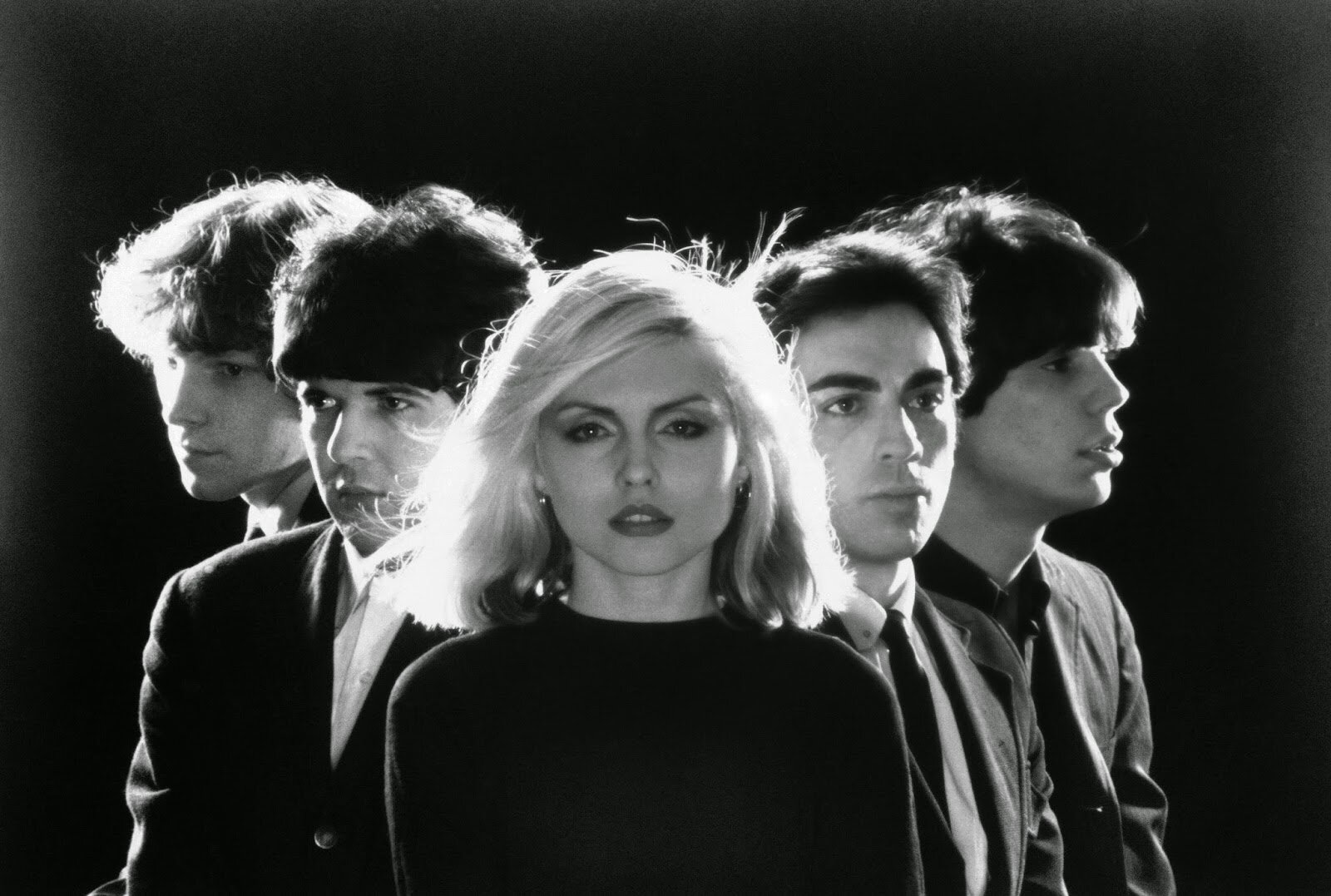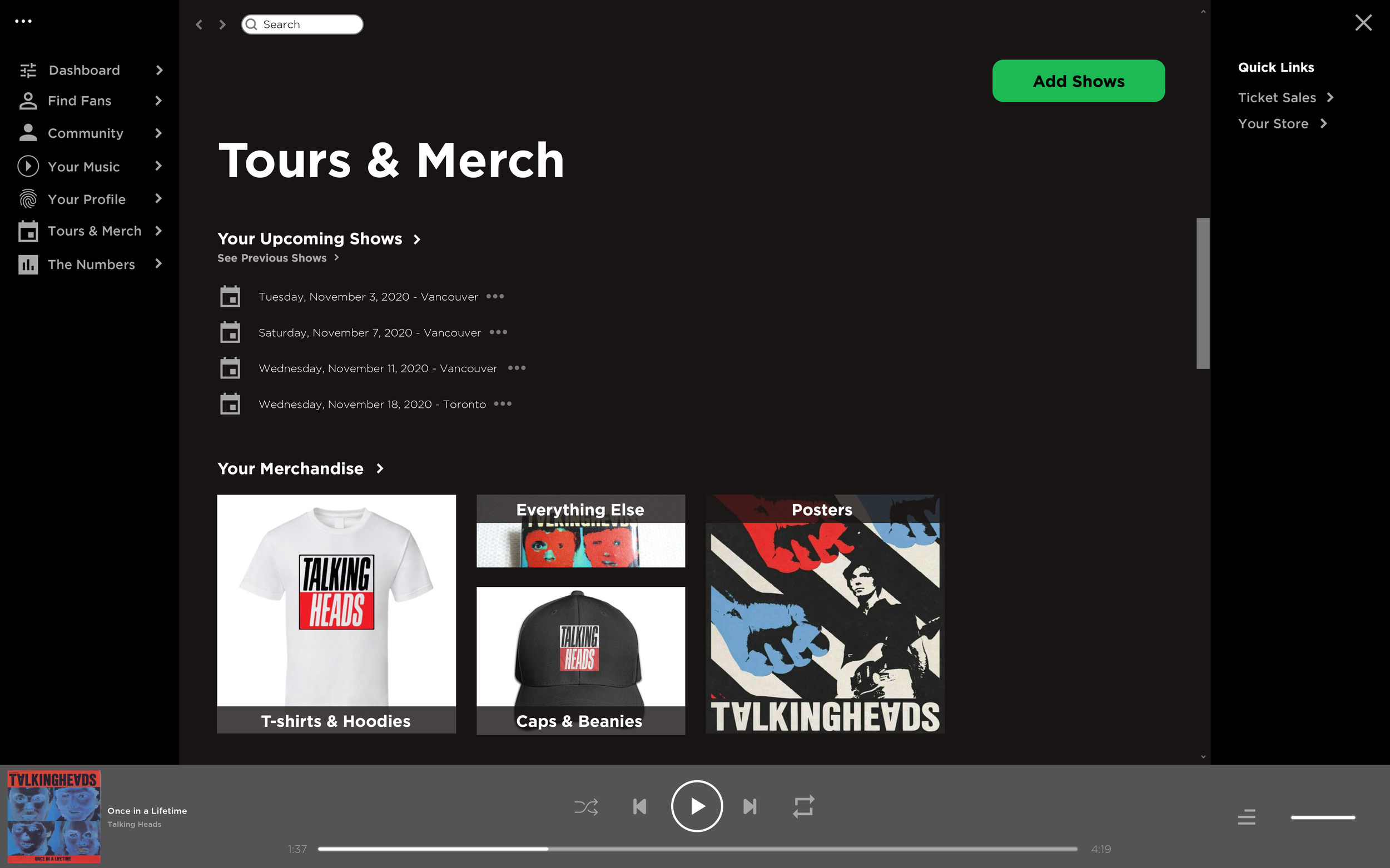
Spotify (Project)
Design Challenge
Spotify has decided to give artists control of their catalogues on their platform.
Design a Mac-based editor and artist management system that allows artists to manage their presence on Spotify.
The solution should account for all existing artist content on Spotify but feel free to get creative and add additional features that an artist might find useful.
The Problem
Musical artists currently lack control and autonomy over the way their art is presented on Spotify and want to be able to manage their presence and brand without relying on and needing to pay third party distributors and record labels.
Project Scope
My project scope identified to me early in the process that I needed to focus on narrowing the scope.
Discover
Research
My research was focused on music artists that currently use Spotify to understand their goals, motivations and frustrations with the platform.
Survey
I conducted an online survey with music artists focused on their usage of and attitudes towards Spotify. (View survey)
Three key insights gained were:
88%
of responders said that being able to share their music online was hugely important to them
95%
of responders said the biggest problem they face when sharing their music online is getting exposure
75%
of responders said they preferred to use Bandcamp over Spotify
Interviews
I conducted 3 interviews with musicians who actively use Spotify to manage their music.
Key Insights from Research
Musicians want to build and manage a community. Currently no service allows artists to manage their art and their community in one place.
Artists want more exposure. Artists find it difficult to stand out and gain a following. Spotify’s ‘playlists’ feature is limited. Artists want to be able to reach more people with their music.
Artists want to express themselves. Spotify’s customisation options are limited and this is a source of frustration for artists.

“There are so many distributors out there, so you really just gotta weigh up the pros and cons and what works best for you as an artist… some artists have a massive following on totally different platforms other than Spotify.”
- Musician
Define
Affinity Map
I mapped the data collected from user interviews and surveys to help define insights.
The size and scope of the affinity map talks to the fact there were a lot of possible directions to explore. There were insights to do with things like sound quality, discoverability, false attribution and search limitations. Whilst important, I did not feel that these were core issues that needed to be solved within the scope of this project.
Empathising with Artists
Empathising with artists helped to me understand two key insights:
The paradox of technology - the advances that have made making and sharing music as easy as it’s ever been mean it’s harder than ever to stand out from the crowd.
Artists need more support with promoting their art to the world. It’s too easy to get lost in the noise. They spend their time trying to build a following across many platforms, generally 3 or 4 music platforms, and 2 or 3 different social platforms.
Who are we empathising with?
We want to gain a deeper understanding about the life and the challenges of musicians and artists; whether music is a hobby to them or a profession.
Artists today say that it is incredibly hard to find success in the music industry; paradoxically due to the very same elements and technological advances that have made making and sharing music as easy as it’s ever been. How do you stand out when there is so much competition?
What do they see?
They see an oversaturation of musicians. They see that anyone can make music and everyone is. They see that it’s very difficult to stand out from the crowd. They see that it’s easy to get lost in the noise.
They see that others have a greater chance of success; due to having a more popular style of music or due to bigger and better marketing campaigns.
What do they do?
Spend their time trying to build a following, across many platforms, generally 3 or 4 music platforms, and 2 or 3 different ‘social’ platforms. They pay distributors and marketers to manage their music. They wait and hope to be featured in the Spotify playlists or to be discovered.
What do they think and feel?
They feel they have a lack of control. They feel that it might be too hard to stand out. They feel once your music is out there, you’ve lost your chance to gain followers; that you need to build them around the release of new music. They feel that it’s harder to succeed as an independent artist. They feel that the market is overcrowded.
What do they need to do?
Artists need to get better at being able to reach new people and more people in order to share their music as far and wide as they can. They need a greater understanding - and more support - when it comes to promoting their art to the world. They also need to make clear decisions about the types of people they wish to reach.
We will know they have succeeded when they feel that they have succeeded.
What do they say?
“It’s easy to produce certain kinds of music, and everyone is really doing it now, so I think it's hard for people who are making music outside of those very popular genres. And it's really hard to gain a following. Whereas back in the day, I feel like people would go to a CD shop, and they'd choose something with the coolest cover and even if they didn't really know what it sounded like they would potentially buy it. I feel like it's harder to get those curious listeners now.”
What do they hear?
They hear they have a lack of control. They hear that streaming is where most people listen to music. They hear that Spotify has the greatest reach and that you must have your music on Spotify if you wish to grow. They hear that being featured in playlists is the secret formula to success. They hear that they could be getting paid more money across the range of different services, distributors and labels. They hear that some distributors are better than others. They hear that the big distributors provide you with the greatest chance of success.
Pains and Gains
They are afraid of not being able to succeed. They are afraid of not being good enough. They are anxious they will not be able to make enough money from music. They want to have more control over their art, their music, their presence, their community. They hope that fans can discover their music and their art online, they dream of being validated and appreciated as an artist
User Persona
Beth wants to find a community of people to share her music with.
Beth is a music artist. She is 29 years old.
She is trying to make it as a musical artist but is struggling to reach and engage with her community.
Goals
To be able to find a community of people to share her music with.
To be able to express her individuality and connect with others in a meaningful way; that goes beyond the ‘number of listens.’
Pain Points
She finds it hard to create a genuine connection with people through music streaming services.
She finds it annoying that she has to use multiple platforms and services to reach people.
She wants to express herself more but says she is limited.
Thoughts & Feelings
She does not like that there is no way through Spotify to connect with people in a meaningful way.
She wants to be able to express herself and she thinks that Spotify doesn’t allow enough customisation options for artists on the platform.
She feels that the music she makes is not mainstream enough which she sees as a hurdle.
She feels that the music industry and music streaming services are oversaturated which makes it hard to be discovered and be discoverable.
Actions
She prefers to use Bandcamp for her music as it provides her with a greater sense of community. She uses Spotify because she understands she needs to in order to share her music with a wider audience.
Needs
Tools and systems to be able to more freely express herself online.
A way to more easily discover artists that she likes and she needs ways for listeners to more easily discover her music.
“It's really hard to get a following. Back in the day, people would go to a CD Shop, and they'd choose something with the coolest cover and even if they didn't really know what it sounded like they would potentially buy it. I feel like it's harder to get those curious listeners now.”
Customer Journey Map
A journey from excitement to ambivalence…
Revised Problem Statement
Musicians want a single platform that allows them to build and manage a community, gain exposure for their art and freely express themselves.
Develop
How might we change the
story…?
How might we allow artists to engage with their fans more easily and save them time and effort using multiple platforms?
How might we allow artists to engage with their fans in a more meaningful way?
How might we allow artists more control over their presence on Spotify to be able to express themselves more?
Brainstorming
The scale of the platform and of its existing functionality led to a plethora of ‘solutions.’ A key challenge throughout the project was learning how to refine and reduce the scope of the problem and the scope of what to focus on.
MVP for UX
As part of ideation, I plotted the ideas generated into an MVP matrix to appraise their viability.
User Flow
My user flow considered the use case of an artist logging into the Artists platform and uploading new music.


























